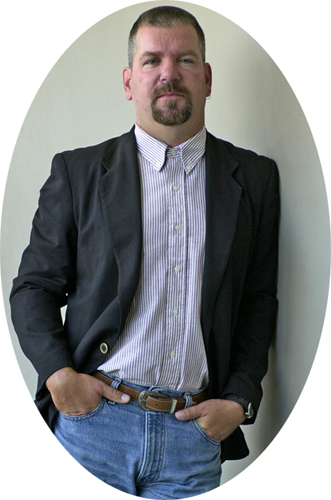 Social media has turned the news gathering and distribution world upside down. No longer must we sit mute as we read our newspaper or watch the television news, knowing that they’ve got it wrong but unable to voice our views. Now, we can easily post our views on a blog, Facebook, Twitter or any other social media publishing platform we choose to use. Others who share our interests will find us and, if they think we’ve said something worth reading, they can redistribute our content with a simple gesture on the platform of their choice.
Social media has turned the news gathering and distribution world upside down. No longer must we sit mute as we read our newspaper or watch the television news, knowing that they’ve got it wrong but unable to voice our views. Now, we can easily post our views on a blog, Facebook, Twitter or any other social media publishing platform we choose to use. Others who share our interests will find us and, if they think we’ve said something worth reading, they can redistribute our content with a simple gesture on the platform of their choice.
Not only can we talk about the news we receive, we can report it first hand. We’ve already seen citizen generated news sites like NowPublic spring up to take advantage of the fact that there are many, many more citizens who are originating eyewitness reports on events where the news media have yet to touch down.
Mainstream media is rapidly being undercut as audiences move to online social media and advertisers realize that what worked yesterday may not be working today.
On the other hand, let’s be honest that we all get a thrill if our content crosses over into traditional mainstream media and gets referenced there. That’s a simple acknowledgment that while most of us write for niche audiences who share our interests, an appearance in traditional mainstream media gives us access to a much larger audience. And, in most cases, mainstream media still carries with it a greater degree of authority in its newsgathering and reporting.
So, what’s a newspaper guy going to do? Stick his head in the sand and hope that the user trends don’t make him a casualty before retirement?
 If you’re Mathew Ingram, you’re taking a different path. You’re embracing the new online social media tools and exploiting your incumbent advantages of authority and reach to try to build a new relationship with your audience in the new medium. And you’re helping (pushing) your employer, Canada’s newspaper of record, the Globe and Mail, to embrace new media and explore their potential.
If you’re Mathew Ingram, you’re taking a different path. You’re embracing the new online social media tools and exploiting your incumbent advantages of authority and reach to try to build a new relationship with your audience in the new medium. And you’re helping (pushing) your employer, Canada’s newspaper of record, the Globe and Mail, to embrace new media and explore their potential.
And, if you’re Mathew Ingram, you’re going to share your knowledge, experience and vision with Third Tuesday Toronto on March 24.
The Globe recently appointed Mathew as their “communities manager.” He is well qualified for this position, having established himself as (one of) Canada’s most respected and widely followed technology bloggers and reporters.
Since he took over as community manager, the Globe has engaged in high profile social media experiments – most notably using CoverItLive for live coverage of a subway shooting in Toronto, the Canadian budget and the visit to Ottawa of President Obama; the establishment of a public policy Wiki; and encouraging other Globe reporters to make it personal by using Twitter.
This will be Mathew’s second appearance at Third Tuesday. He helped us establish Third Tuesday when he agreed to be the speaker at our third event. Then, he was talking about the use of social media by reporters. And he was a great hit.
I’m sure he’ll be an equally great hit this time – and a sellout. If you’d like to attend, you can register online at the Third Tuesday Toronto Website.
Thanks to our national sponsor, CNW Group, this Third Tuesday will again be free to the community. CNW Group covers the cost of our sound system, which is our biggest single cost. So, thanks to CNW for supporting Canada’s social media community.
 When I announced Mathew Ingram‘s Third Tuesday Toronto presentation on How the Globe and Mail is using social media to connect with its readers, the session sold out in less than an hour.
When I announced Mathew Ingram‘s Third Tuesday Toronto presentation on How the Globe and Mail is using social media to connect with its readers, the session sold out in less than an hour. So, I’m really excited to be able to tell you that we’ve snagged Mathew for Third Tuesday Ottawa on March 30.
So, I’m really excited to be able to tell you that we’ve snagged Mathew for Third Tuesday Ottawa on March 30.
 Social media has turned the news gathering and distribution world upside down. No longer must we sit mute as we read our newspaper or watch the television news, knowing that they’ve got it wrong but unable to voice our views. Now, we can easily post our views on a blog, Facebook, Twitter or any other social media publishing platform we choose to use. Others who share our interests will find us and, if they think we’ve said something worth reading, they can redistribute our content with a simple gesture on the platform of their choice.
Social media has turned the news gathering and distribution world upside down. No longer must we sit mute as we read our newspaper or watch the television news, knowing that they’ve got it wrong but unable to voice our views. Now, we can easily post our views on a blog, Facebook, Twitter or any other social media publishing platform we choose to use. Others who share our interests will find us and, if they think we’ve said something worth reading, they can redistribute our content with a simple gesture on the platform of their choice. If you’re
If you’re  I frequently speak about social media at conferences and workshops. As a presenter, I always want to give participants at my sessions full value for their time and attention. An incident at a workshop I presented a couple weeks ago has been gnawing at me.
I frequently speak about social media at conferences and workshops. As a presenter, I always want to give participants at my sessions full value for their time and attention. An incident at a workshop I presented a couple weeks ago has been gnawing at me. I received an email through the
I received an email through the  When I return to Canada from Australia next week, I’m heading to Alberta to make
When I return to Canada from Australia next week, I’m heading to Alberta to make  How bad is it? I’m on a trip to Australia. Away from the office. And today, I logged over 5 and 1/2 hours reading and responding to the emails I received since yesterday. That leaves precious little time to actually do the work that’s important to me.
How bad is it? I’m on a trip to Australia. Away from the office. And today, I logged over 5 and 1/2 hours reading and responding to the emails I received since yesterday. That leaves precious little time to actually do the work that’s important to me. When I first started blogging, I was struck by how quickly and easily I discovered bloggers around the world who shared my interests and from who I could learn. My community of interest spanned the globe, including people like
When I first started blogging, I was struck by how quickly and easily I discovered bloggers around the world who shared my interests and from who I could learn. My community of interest spanned the globe, including people like  I’m getting a chance to visit old friends in Calgary early in March. And they’ve been nice enough to ask me to be the speaker at
I’m getting a chance to visit old friends in Calgary early in March. And they’ve been nice enough to ask me to be the speaker at  I’ve been using
I’ve been using